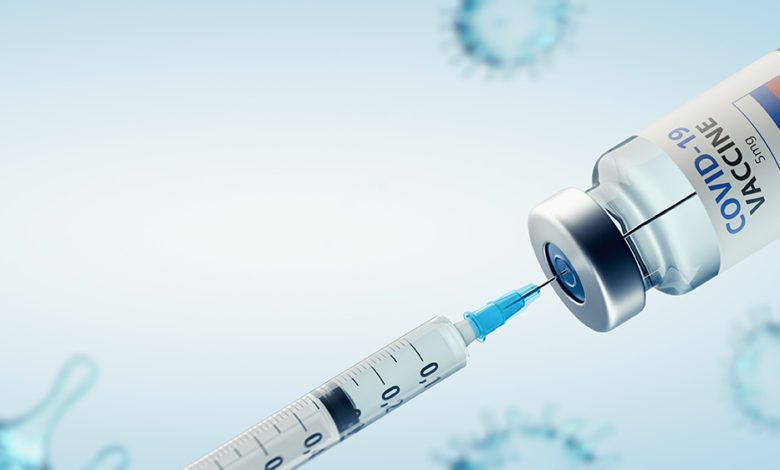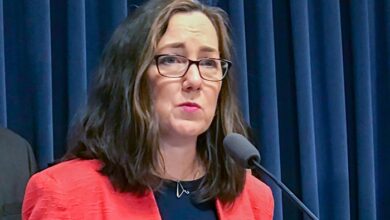Christie Clinic’s Dr. Jeanelle Murphy talks about the COVID-19 vaccine

While COVID-19 infections are on the decline in the United States, the pandemic is still not over.
Even though 14 million Americans have been vaccinated with one of two COVID-19 vaccines (Moderna and Pfizer), four-percent of the population does not account for the decline in cases over the last six weeks.
In early January, Johns Hopkins University reported a seven-day
rolling average peak of 249,349 positive COVID-19 cases, with 132,447 hospitalizations on Jan. 6. Today those numbers stand at a seven-day rolling average of 88281 new cases and 67,023 hospitalizations per day.
While new positive cases and hospitalizations are down, the United
States continues to see over 3,000 COVID-19 related deaths per day on average.
“We are still at around 1,500 to 3,500 deaths per day. The cases are
more than two-and-a-half-fold times what we saw over the summer,” Dr. Rochelle Walensky, director of the Centers for Disease Control and Prevention, said on NBC’s Meet the Press. “It’s encouraging to see these trends coming down, but they’re coming down from an
extraordinarily high place.”
In total, the United States has recorded more than 27.7 million cases
of COVID-19 and more than 487,00 deaths, according to John Hopkins data.
At this time, the decline in cases as the vaccine rolls out
have been attributed to social distance and masks. Still, President
Joe Biden said last week that the U.S. will have enough supply of the
COVID-19 vaccine by the end of the summer to inoculate 300 million
Americans.
According to the Champaign-Urbana Public Health Department, 52,668 Champaign County residents have received at least one dose of the COVID-19 vaccine. As of Feb. 5, 11,739 of the 172,760 eligible residents have been fully vaccinated.
Christie Clinic’s Jeanelle Murphy, DO., said that it’s important that
people continue to register for the COVID-19 vaccine as they become
eligible.
Murphy explained that most vaccines give people a weakened virus in order to stimulate the immune system to produce an immune response so that the next time the person sees the actual virus, the cells will attack it.
But the COVID-19 vaccine is different in that it uses mRNA — Messenger RNA — technology, which has been in development for two decades. It contains no live or weakened form of the actual virus, but the mRNA alone teaches the cells how to make a protein — or even just a piece of a protein — to trigger the immune response and produce antibodies that will defend against the actual virus.
Murphy said that the mRNA can not alter DNA, nor does it have chips or fetal tissue in the vaccine.
“If we were to see the actual COVID virus, our immune system is
prepped and ready to attack it. So that’s actually immunity,” she
said. “So we should not get COVID-19.”
Based on evidence from clinical trials, the Moderna vaccine was 94.1% effective at preventing laboratory-confirmed COVID-19 illness in people who received two doses who had no evidence of being previously infected.
The FDA has approved the Moderna and Pfizer vaccines at 95-percent efficacy.
“The problem is we don’t know how long the immunity lasts because we haven’t studied it long enough,” Murphy said.
Right now, the CDC says that natural immunity, getting the virus and
fighting it off, could last as long as 90 days. Vaccine-induced
immunity, though, is still being observed as it goes through “real
world” conditions.
Like all things with the pandemic, the learning curve is great.
Murphy said, though that just because the COVID-19 vaccine was
developed in under a year’s time, it is still effective.
“It’s not a new technology,” she said. “It’s been around for about 20
years, they used this technology in the Ebola vaccine. So it’s not
actually a brand new technology.
“They had to develop it quickly, but that doesn’t mean it’s any less
effective or any more dangerous.”
As scientists learn how fast COVID-19 mutates, which Murphy said may not be as fast as the flu virus, the effectiveness of the vaccines and variants will come to light. The COVID-19 virus has three different mutations at this point in time: UK Strain, South African Strain, and Brazil Strain.
According to the University of Maryland Medical System, the vaccines
will work against the new variants, but it will take time to see how
effective they are. The same report cites that the vaccine continues
to prevent hospitalization or death and that as more people get
vaccinated, the virus will be less likely to mutate.
Murphy said that it may be that people need a booster shot in the
future, but “that’s certainly not a reason not to get the vaccine now.
“It’ll provide some protection, even if it’s not full (protection) if
it does mutate.”
The new virus and its treatments will continue to be studied for
decades to come.
“We know it’s effective at 95-percent for at least three months,”
Murphy said. “We’re not really necessarily going to know if it’s going
to be effective in 15 years until it’s been 15 years.
“Getting herd immunity by letting people just get COVID is not a good
idea because so many people are dying from it. So we would rather get the immunity without people dying; and the vaccine is clearly much safer than getting the actual disease for a lot of people.”
Murphy added that vaccine trials are just beginning on children
between the ages of 12 and 17.
Women who are pregnant or breastfeeding have been cleared to get the vaccine, but Yale Health suggests that anyone who has had a severe allergic reaction (anaphylaxis)to any component of the COVID-19 vaccine or those should not receive the vaccine or anyone with a severe allergic reaction (anaphylaxis) to any vaccine or injectable (intramuscular or intravenous) medication should consult with their health provider to assess risk prior to receiving the COVID-19 vaccine.
At Christie, the majority of the employees are receiving the Moderna
vaccine. Murphy said that after the first shot, people are reporting a
little redness and swelling, which is common at injection sites. For
some, the second shot is bringing a day of flu-like symptoms,
including fever, body aches and fatigue.
“Generally, it’s looking like it’s pretty well tolerated,” she said.
It is important, though, to get both doses, Murphy said.
The CDC recommends 21 to 28 days between doses. Murphy said it is possible to wait up to six weeks, but there isn’t information on how
effective it is.




